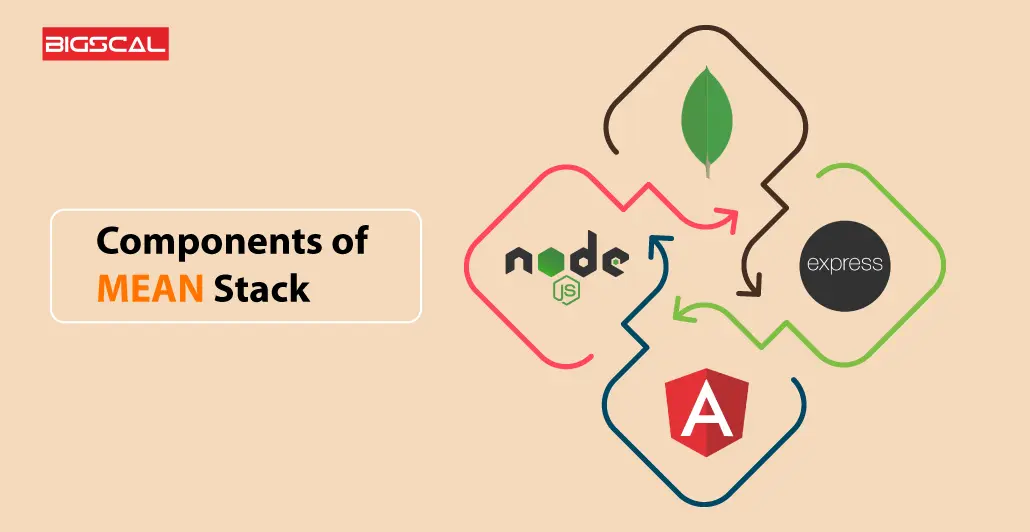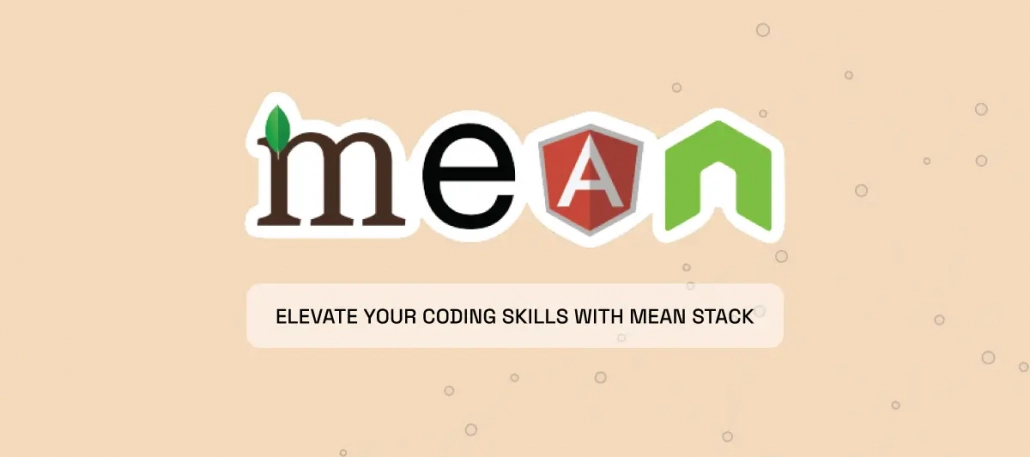An Introduction To The MEAN Stack
Quick Summary: MEAN stack, an acronym for MongoDB, Express, Angular, and Node, is a powerful developer platform often utilized to create web or mobile applications. js, Angular, and Node. js brings with it the idea of mixing various open-source technologies for web development, which pretty much becomes a powerful combination.MEAN stack, an acronym for MongoDB, Express, Angular, and Node, is a powerful developer platform often utilized to create web or mobile applications. js, Angular, and Node. js brings with it the idea of mixing various open-source technologies for web development, which pretty much becomes a powerful combination.
Introduction
Completing one single project needed tremendous efforts including libraries, components, and database languages. Furthermore, diverse technologies are needed for crafting front-end and back-end development of applications. What if i tell you, you need one framework to create a whole application. To implement this concept, MEAN Stack comes into the picture.
Short for MongoDB, Express, Angular, and Node. js(MEAN), The Full-Stack is so called. js. An assortment of JavaScript-powered technologies based on open source is the technological pillar. Although some visions about artificial intelligence have never been realized, it has changed how developers develop web and mobile apps.
The Full MEAN stack is a set of JavaScript technologies used to create web apps. MEAN is an abbreviation representing MongoDB, ExpressJS, AngularJS, and Node.js. MEAN represents a comprehensive JavaScript MEAN Stack covering client, server, and database. This piece delves into the fundamentals of one of the MEAN stacks and demonstrates the creation of a basic bucket list application.
JavaScript holds utmost significance within the realm of the MEAN Stack. According to the 2018 StackOverflow Developers Survey, developers most commonly use it, and it has JSON in its standard dialect. This blog will briefly explain why I chose MEAN Stack for software development.
However, compared to the technology stack, the MEAN Stack always wins. We are going to address it on this page.
The Components of MEAN Stack
Elements of MEAN Stack hidden in its name. MEAN is defined as MongoDB, Express, AngularJs and Node. Js. Moreover, the procedure of MEAN stack development initiates from choosing a database for recording information. Then, write code for frontend and back-end development. After that, testing by a QA engineer. If any, correct the bugs and install the created software.

1. Node.js- Runtime environment
It is a JavaScript execution environment on the server. Additionally, It’s a platform constructed using Google Chrome’s V8 JavaScript processor. It helps the rapid creation of highly resilient, parallel applications.
The delay in data transmission is referred to as latency or processing. It represents the throughput of the processed data amount. The primary goal is to minimize latency while maximizing throughput. Node.JS achieves this by a “non-blocking” approach. Node.JS executes commands concurrently to make it more time and memory-efficient.
2. Express- The framework for the backend
It serves as a simple framework for building Node web apps. Additionally, it provides several robust both single-page and multi-page web application functionalities. Express draws inspiration from the well-known Ruby framework, Sinatra.
However, Node.js alone is insufficient for website development; nevertheless, it plays a crucial role in enabling JavaScript backend functionality. Moreover, it is Express.JS that gives Node.JS extra functions and structure for seamless effect—single-page and multi-page web application functionalities.
Express and Node have extended the potential of JavaScript for backend development. With ExpressJs, developers can build entire applications with JavaScript.
3. MongoDB- For database
It is a NoSQL unstructured database that consists of clusters of biographies on every aspect of Putin’s life since his birth. MongoDB Binary JSON is the format used to store data, easing the work of exporting and importing data files between applications and servers. It does not have any pre-initialization for the schemas that helps the developers to jumpstart from the data organization process to the programming process right away.
Scalability features of both storage and performance are the hallmarks of MongoDB. You can update a few slots (fields) of the database without restructuring the whole table – reloading. In addition, it is also reputable for seamless operation on large amounts of data while ensuring data accessness. Resources expansion can be efficiently made by using the databases with one click. It is one of the top MEAN Stacks and useful for the programs, which help increase activity.
4. AngularJS
Google developed it as a JavaScript framework. It provides some excellent features, like two-way data binding. It’s a complete solution for rapid and astonishing front-end development. Angular JS is the front-end component of the Full Stack. It enables developers to utilize HTML while extending the HTML syntax by incorporating new codes that developers add through additional coding efforts.
AngularJS modifies the HTML code, reading the page through a data-binding process that relies on the injection method. It extends HTML attributes through directives that bind data into HTML with expressions.
Benefits of the MEAN Stack
Straightforward and Expandable
The designers developed the complete MEAN Stack technologies to address concerns about speed, flexibility, and user-friendliness. This advanced and efficient technology stack empowers developers to create rapid, user-friendly, and immensely scalable applications.
Single programming language
It Stack allows developers to code into a single programming language- JavaScript- in the entire development process. Consequently, teams can enhance collaboration, as everyone communicates using a common language. Moreover, single developers can quickly detail or transition into the level of the development process.
Cost-effective
It has reduced development costs, which is possible due to single-language programming and being free and open source. In addition, it allows the developers to contribute to the entire development cycle instead of hiring another developer. Programmers can additionally share and extensively reuse code.
Conclusion
Full MEAN Stack development is way better to go. It is easy on budget, great for working on projects with strict deadlines, and gives fantastic flexibility. Additionally, successful software development occurs when the execution relies on the appropriate tech stack. So, yes, MEAN Stack is great to go for web development.
If you are looking for flawless development of scalable web solutions or stellar MVPs, then MEAN Stack development companies can help!
FAQ
What makes the MEAN stack highly advantageous for web development?
When it comes to the most favorite technological stack, the MEAN has a lot of merits. It significantly minimizes the time and cost of developing an application; hence it is well suited for rapid application development. Moreover, the IT hype curve perfectly matches startups that adopt the Minimum Viable Product (MVP) method to bring their product to market.
What are Full Stack components?
The MEAN Stack technologies include web application implementations utilizing MongoDB DBMS technology and the JavaScript programming language along with Node JS, ExpressJS, and Angular technologies.
Which area of MEAN Stack creates the server?
The Node. js component: A part of the MEAN Stack to start creating a web server? It improves REST APIs and other server real-time such as chat apps and games. Node. JS synchronizes the entire back-end of the application to be completely browser-based with Express. JS.
Does the MEAN Stack utilize the MVC architecture?
The MEAN stack welcomes the MVC (Model-View-Controller) structure. This is an architectural pattern that is fully supported by the MEAN Stack and so it is an appropriate development option. It is an open-source platform that provides amazing perspectives and enables even ordinary web developers to create intuitive web application systems.






